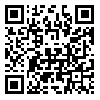Tue, Jul 1, 2025
[Archive]
Volume 35, Issue 1 (1-2021)
Med J Islam Repub Iran 2021 |
Back to browse issues page
Download citation:
BibTeX | RIS | EndNote | Medlars | ProCite | Reference Manager | RefWorks
Send citation to:



BibTeX | RIS | EndNote | Medlars | ProCite | Reference Manager | RefWorks
Send citation to:
Nojomi M, Moradi-Lakeh M, Pourmalek F. COVID-19 in Iran: What was done and what should be done?. Med J Islam Repub Iran 2021; 35 (1) :758-762
URL: http://mjiri.iums.ac.ir/article-1-7437-en.html
URL: http://mjiri.iums.ac.ir/article-1-7437-en.html
Preventive Medicine & Public Health Research Center, Psychosocial Health Research Institute, Department of Community and Family Medicine, School of Medicine, Iran University of Medical Sciences, Tehran, Iran , mnojomi@iums.ac.ir
Abstract: (1772 Views)
The current COVID-19 pandemic started in Wuhan, China, in December 2019. The World health Organization (WHO) declared the COVID-19 as a public health emergency of international concern on January 30, 2020, and recognized the situation as a pandemic on March 11, 2020. Around 135 million confirmed cases and around 2.9 million deaths until the first week of April 2021 have been among its direct impacts on human health.
All countries have been affected in different degrees, and each of them has used different strategies to protect themselves against health and nonhealth consequences of this epidemic. Although all approaches are full of mistakes with fatal and painful results, some of them were successful in limiting the epidemic. One of the astonishing improvements is development of several vaccines in a relatively short period of time, which has increased hopes for epidemic control. This review aims to critically appraise the strategies for COVID-19 epidemic control in Iran since the beginning of the disease until the fourth peak of disease in March 2021.
All countries have been affected in different degrees, and each of them has used different strategies to protect themselves against health and nonhealth consequences of this epidemic. Although all approaches are full of mistakes with fatal and painful results, some of them were successful in limiting the epidemic. One of the astonishing improvements is development of several vaccines in a relatively short period of time, which has increased hopes for epidemic control. This review aims to critically appraise the strategies for COVID-19 epidemic control in Iran since the beginning of the disease until the fourth peak of disease in March 2021.
Type of Study: Commentary Article |
Subject:
Community Health
Send email to the article author
| Rights and permissions | |
 |
This work is licensed under a Creative Commons Attribution-NonCommercial 4.0 International License. |








